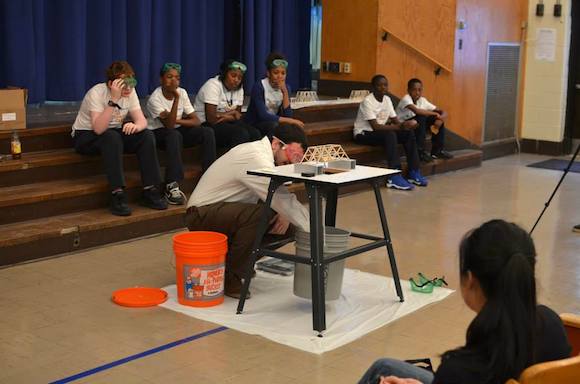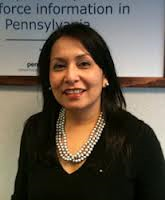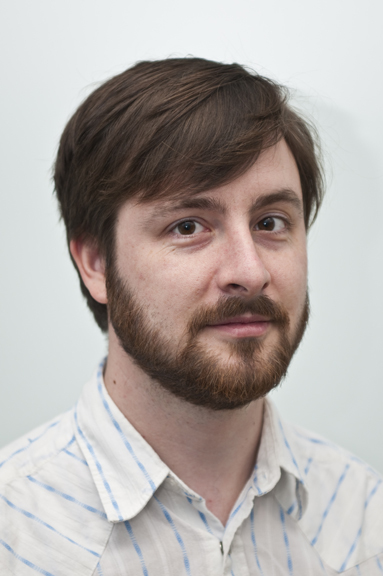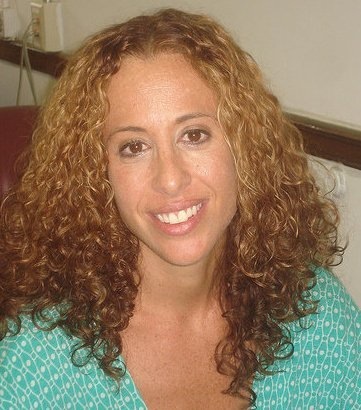It's a conundrum that has bedeviled educators, policymakers, workforce development experts and — especially — employers, for years: With high unemployment, why is it still so difficult to find workers skilled in science, technology, engineering and math?
The STEM skills gap in Pennsylvania and across the nation affects companies far beyond the tech and science sphere. In fact, domestic manufacturing is steadily becoming more “advanced,” transforming into a computer-heavy, math-heavy world.
STEM education is considered the Holy Grail for closing that gap, and the emphasis is shifting to ever-younger students in an effort to ensure a pipeline of future workers. But of course the problem is both short- and long-term — there is a need to focus on both the next generation and the existing workforce.
Keystone Edge interviewed a handful of the important thinkers on this issue, people working to make the Commonwealth more competitive. Meet Pennsylvania's “Faces of STEM.”
Sue Mukherjee talks numbers
It is only fitting that when Sue Mukherjee talks about STEM, she offers hard data.
Mukherjee serves as director of the Center for Workforce Information and Analysis, a division of the Pennsylvania Department of Labor & Industry and the state's leading source for employment statistics. Before that, she was special assistant to the state secretary of education and operated as the state lead for Pennsylvania's STEM initiative for the National Governors Association.
Here are a few of those numbers:
Looking ahead to 2020, STEM jobs are projected to grow by 10 percent; non-STEM jobs will grow by 5 percent.
Twenty-two percent of the state's current jobs are STEM-related.
STEM wages are almost 40 percent higher than non-STEM.
The average wage in core Marcellus Shale industries is over $76,000, almost $30,000 over the statewide average.
And according to Mukherkee, some of the fastest growing occupations (welders, cutters, assemblers of mechanical or electrical equipment, cost estimators) and some of the state's growing “industries of significance” (advanced manufacturing and energy) demand STEM skills.
With a 6.9 percent unemployment rate (that's 443,000 people), the need for training and re-training is urgent, especially when coupled with the fact that many employers, especially manufacturers, report a shortage of properly skilled workers.
“We cannot just concentrate on the pipeline [of future workers],” says Mukherkee. “We have a lot of talent on the sidelines. Concentrating on the pipeline is very important, but concentrating on the current workforce is equally important.”
One tool that the Center has created is its PA Career Coach website. Launched about a year and a half ago, the site provides users with current local data on wages, employment trends, job postings, training opportunities and advice on career transitions. The site is geared for users high school and up.
“If you want to become a worker of the future, these are [tools] you need to understand,” explains Mukherjee.
Justin Driscoll thinks longterm
As director of STEM Talent Acquisition at the Pittsburgh Technology Council, Justin Driscoll helps technology companies in Southwestern Pennsylvania find skilled workers. The key, he says, lies in convincing employers to rethink their culture.
Studies show that for millennials in particular, it's not motivation enough to just show up and collect a paycheck. Instead, explains Driscoll, they care about mission, social consciousness and making a difference. “Companies that have a compelling story and culture are not having as hard a time recruiting workers,” he says.
Examples abound. Driscoll points to Pittsburgh's Industrial Scientific, a maker of gas detection equipment. Here's how the company explains its mission: “Industrial Scientific's employees are dedicating their careers to ending death on the job in this century.”
Or The Resumater, a Pittsburgh human resources startup that Driscoll says provides “a great work environment and really values its people.”
Lessons can also be learned from a giant like Consol Energy. Even as it moved from coal to natural gas, it looked to the future with a whole new system for leadership development.
Still, reinvention can be a hard sell for companies focused on immediate return-on-investment.
“If you're expecting immediate results you're going to be disappointed,” cautions Driscoll. “By and large, it's a long-term investment to invest in the next generation of technology workers.”
David Clayton gets creative
Philadelphia's University City Science Center, the oldest and largest research campus in the nation, is picking up STEAM.
Under a new initiative, the Science Center has officially added an “A” for art to its STEM programming as engages with Philadelphia schoolchildren, using creativity as an entry point to learning about science and technology.
If you merely tell kids about microscopes, it can be “boring and a little imposing,” says David Clayton, the Science Center's Director of STEAM Initiatives. But if you take photos of cells, suddenly “we're making this cool thing, starting with a microscope.”
This spring, middle-school girls will take an eight-week course called “DNA Selfie,” in which they create self-portraits of their own cheek and hair cells, and DNA, using photo-microscopy, vinyl cutters, laser cutters and ingenuity.
Meanwhile, middle schoolers from a nearby West Philadelphia charter school will engage in “Polymer Play,” learning about material science by making and building with polymers. They'll make bio-plastic, recycled plastics into new materials and experiment with tools such as laser cutters and power tools.
The Science Center also offers laboratory tours to student groups. For many young visitors, it's a chance to meet scientists and perhaps envision themselves in a lab coat.
“It's a unique view of what it means to be a scientist,” explains Clayton. “And that they come from all walks of life, all countries, all backgrounds and that there are many women working in our labs.”
The new STEAM initiative focuses on seventh and eighth grades, the sweet spot, research shows, for engaging students. Clayton says he is also planning family-friendly events, teacher workshops and later, lab ambassadorships for girls and one-on-one mentorships with scientists.
The Science Center reports that Philadelphia companies created 64,000 STEM and finance jobs in 2011, but local universities only gave out 6,000 STEM related degrees.
“This,” says Clayton, “is our way to help combat the lack of science and technology workers in the U.S.”
Michael Franklin and Kimberly Newman foster the next generation
Here's a simple equation: Take a psyched science and math teacher, add a motivated and supportive principal, involved parents and 285 kids. The sum? Chester A. Arthur Elementary School, a Philadelphia public school making a major commitment to STEM education.
Located in Graduate Hospital, an evolving section of South Philadelphia, Arthur is home to the nation's only middle-school club certified by the American Society of Civil Engineers (ASCE) and an active robotics club. The Verizon Foundation recently awarded the school $25,000 to support STEM education. Friends of Chester Arthur, a group of parents, teachers and community members is planning a fundraising event specifically for this growing niche.
Michael Franklin, a seventh and eighth grade science and math teacher at Arthur since 2009, is now the school's STEM coordinator. He launched the after-school civil engineering club with help from an engineer friend. It is one of only 10 ACSE-certified clubs in the nation — the other nine are at high schools.
Last year, the eight members heard from visiting engineers on topics such as structural engineering, hydrology and urban planning. The club's second year got underway this week, with three times as many kids (half of them girls).
Franklin also coaches the school's four-year-old robotics team, the Arthur Bots, which competes in the FIRST LEGO League.
Franklin has a great ally in Arthur's new principal, Kimberly Newman, a former math teacher. Using the Verizon grant, Newman and Franklin are at work incorporating STEM into the everyday curriculum. A planned STEM elective will allow sixth and eighth graders to work on weeklong projects in math, science, computer engineering and more. Newman is also exploring ways to further expose the elementary grades to STEM.
As with the Science Center, another key piece for Arthur is the addition of “A” for art, turning STEM into STEAM, embracing an interdisciplinary, art-based approach to teaching science and math.
“We're at the beginning stages of trying to figure out how to transition from STEM to STEAM to make it a really meaningful program,” says Newman.
ELISE VIDER is news editor of Keystone Edge.
Coverage of STEM advancements in Pennsylvania is made possible through a partnership with Harrisburg University of Science and Technology.





